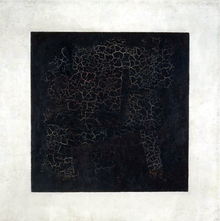Barbara Rose
[11][3][5] In 1961, she received a Fulbright scholarship to visit Pamplona, Spain, which sparked a lasting interest in Spanish culture and art.
[13] She later noted that formalist art historian Michael Fried suggested she begin writing as a critic.
She observed in a 1966 article that formalism, while appropriate for analysis of Cubism, was not as useful as a critical lens on abstract expressionism and other movements of the later 20th century.
In 1972, she received a Front Page Award for her article "Artists with Convictions", which described the art program for inmates of the Manhattan House of Detention for Men.
[26]) "ABC Art" considers the diverse roots of minimalism in the work of Kasimir Malevich and Marcel Duchamp, as well as the choreography of Merce Cunningham, the art criticism of Clement Greenberg, the philosophy of Wittgenstein, and the novels of Alain Robbe-Grillet.
[29] Rose further argued in "ABC Art" that minimalist sculpture was at its best when it was inhospitable to its audience: "difficult, hostile, awkward and oversize".
[31] Closer to Malevich were Walter Darby Bannard, Larry Zox, Robert Huot, Lyman Kipp, Richard Tuttle, Jan Evans, Ronald Bladen, Anne Truitt.
Between Malevich and Duchamp she placed Robert Morris, Donald Judd, Carl Andre, and Dan Flavin.
[10] In 1959, she married Richard Du Boff, an economic historian;[5] the marriage ended in divorce after a year.
[10] In October 1961 in London, Rose married the artist Frank Stella;[5][10] they had two children[6] and divorced in 1969.
